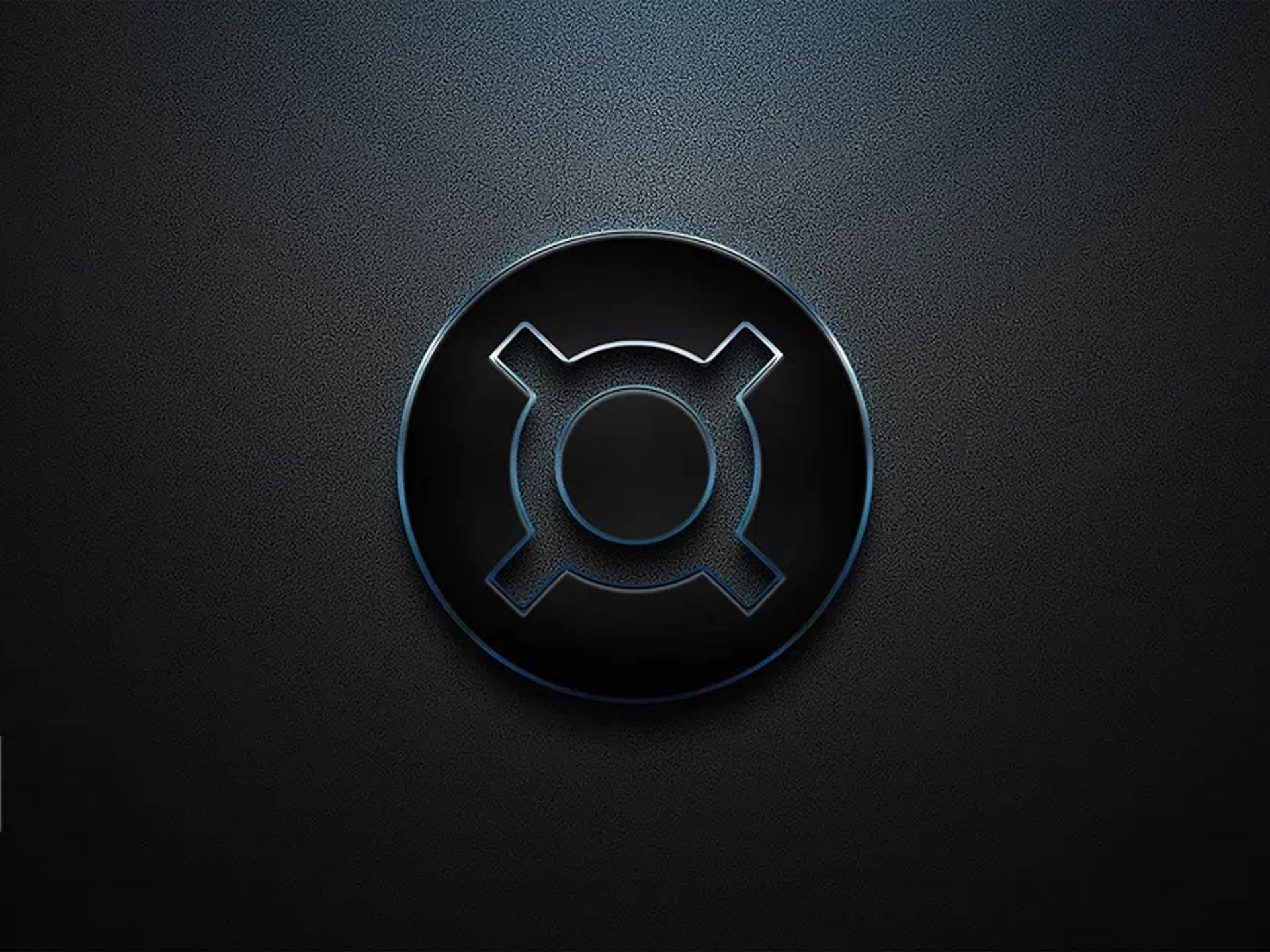위키 구독하기
Share wiki
Bookmark
Frax Finance
Frax Finance
프랙스 파이낸스 스테이블코인 프로토콜(Frax Finance Stablecoin Protocol), 즉 프랙스(Frax)는 스테이블코인을 발행하고 이를 지원하는 하위 프로토콜을 포함하는 프로토콜입니다. 프랙스는 현재 3가지 스테이블코인을 발행합니다. FRAX(프랙스), 현재 frxUSD(프랙스유에스디)로 알려진 USD 페깅 자산입니다. 소비재 바스켓에 고정된 최초의 스테이블코인인 프랙스 가격 지수(FPI) 스테이블코인(Frax Price Index (FPI) stablecoin)은 국가 통화와는 별개의 자체 계정 단위를 만들었습니다. 그리고 ETH(이더리움)에 느슨하게 고정되고 스마트 계약(스마트 컨트랙트)에서 WETH(랩드 이더)의 대체재로 사용되며 프랙스탈 체인의 가스 토큰으로 사용되는 프랙스이더(frxETH)(FraxEther (frxETH))입니다; 이와 대응되는 sfrxETH(에스프랙스이더)는 스테이킹 보상, MEV 및 관련 소스에서 가치를 축적하는 ERC-4626 토큰이며, frxETH V2는 익명 또는 외부 검증자가 frxETH 생태계에 참여할 수 있도록 합니다. 프랙스 프로토콜은 스테이블코인을 통합하는 여러 하위 프로토콜을 포함합니다: 프랙스스왑(Fraxswap), 배로우 AMM(BAMM)(Borrow AMM (BAMM)), 프랙스렌드(Fraxlend), AMO(프랙스렌드 AMO, 커브 AMO, 유니스왑 V3 AMO 포함), 프랙스탈(Fraxtal), 프랙스탈 포인트(FXTL), 프랙스 본드(FXB)(Frax Bonds (FXB)), 스테이킹 프랙스(sFRAX), 스테이킹 프랙스 USD(sfrxUSD)(Staked Frax USD (sfrxUSD)), 프랙스페리(Fraxferry), 프랙스 쉐어(FXS), veFXS 및 veFRAX. [12] [39] [41] [42]
이 프로젝트는 "공급량의 일부는 담보로, 일부는 분수적으로 안정화된 세계 최초의 분수 스테이블코인(스테이블코인)"으로 시작되었습니다. [1][2] 2023년 2월 23일, 프랙스 파이낸스 커뮤니티는 프로토콜의 기본 스테이블코인 FRAX를 완전히 담보화하기로 투표했습니다.[28]
2020년 11월 16일, 초기 사용자가 실험하고 버그를 보고할 수 있도록 테스트넷이 출시되었습니다. 이 프로토콜은 2020년 12월 20일 일요일 오후 4시 PST(2020년 12월 21일 월요일 0:00 UTC)에 이더리움 메인넷에서 공식적으로 출시되었습니다.[5][6][7]
출시 1시간 후 프랙스 파이낸스의 총 가치 잠금(TVL)은 4,300만 달러를 넘었습니다. 2021년 1월 13일 기준으로 1억 개의 FRAX 토큰이 발행되었으며, 담보 비율은 약 85%였습니다.[8]
2021년 1월 19일, 프랙스 파이낸스는 랩드 비트코인(WBTC)(Wrapped Bitcoin (WBTC))를 제치고 1억 3천만 달러 이상의 유동성으로 유니스왑(Uniswap)에서 5번째로 유동성이 높은 토큰이 되었습니다.[9]
2021년 2월 17일, 프랙스 파이낸스는 바이낸스(Binance)에 상장된 최초의 분수 스테이블코인이 되었습니다. 바이낸스(Binance)는 혁신 구역에 프랙스(Frax) 쉐어를 상장했으며, FXS/BTC 및 FXS/BUSD 거래쌍은 2021년 2월 18일 오전 9시(UTC)에 개장되었고 예금은 더 일찍 개장되었습니다.[10]
2022년 1월, 프랙스 파이낸스는 체인링크(Chainlink)와의 협력을 확대하여 프랙스 가격 지수(Frax Price Index)를 지원하기 위해 미국 CPI 데이터를 온체인으로 가져왔습니다. [11]
2025년 4월 29일, 북극성 업데이트는 Frax 생태계에 중요한 업데이트를 가져왔습니다. 이 업그레이드의 일환으로, Frax Share (FXS) 토큰의 이름이 FRAX(프랙스)로 변경되었고, frxETH(프랙스 이더)를 대체하여 Fraxtal(프랙스탈) blockchain(블록체인)의 기본 가스 토큰으로 지정되었습니다. FRAX(프랙스)는 또한 생태계 전반의 네트워크 보안에 사용되는 유일한 상품 자산이 되었습니다. [44]
기타 정보
프랙스 프로토콜은 로버트 샘스(Robert Sams)의 2014년 학술 논문 "암호화폐 안정화에 대한 고찰: 세인요리지 주식"에서 영감을 얻었습니다.[12]
개요
Frax V1
프락스(Frax) Finance 프로토콜이 시작되기 전, 스테이블코인은 법정화폐 담보, 암호화폐 초과 담보, 그리고 균형 등 세 가지 범주로 나뉘었습니다. [13]
프락스(Frax) 프로토콜은 완전 담보에서 부분 담보로 전환되도록 설계된 최초의 스테이블코인으로, 일부 공급량은 자산으로 뒷받침되지 않고 프로토콜 자체에서 발행 및 매입하여 FRAX 토큰의 가격을 1달러로 유지합니다. [14]
이 프로토콜은 스테이블코인 frxUSD와 수수료 및 거버넌스 권한을 제공하는 Frax Share 토큰(FRAX(이전 FXS))으로 구성된 이중 토큰 시스템입니다.
또한 시스템 내 부채를 나타내는 이자 지급 토큰인 Frax Bonds 토큰(FXB)을 향후 출시할 것이라고 발표했습니다.
frxUSD, FRAX(이전 FXS) 및 담보의 가격은 모두 Uniswap 페어 가격의 시간 가중 평균 가격(TWAP)과 ETH:USD Chainlink 오라클을 사용하여 계산됩니다. Chainlink 오라클을 통해 Uniswap의 스테이블코인 풀 평균 대신 USD의 실제 가격을 얻을 수 있습니다. 이를 통해 frxUSD는 기존 스테이블코인의 가중 평균을 사용하는 대신 미국 달러 자체에 대해 안정성을 유지하여 더 큰 복원력을 제공합니다. [14]
Frax V2
Frax V2는 "알고리즘 시장 운영 제어기"(AMO)라는 개념을 도입하여 분수적-알고리즘적 안정성에 대한 아이디어를 확장합니다. AMO 모듈은 frxUSD 가격을 페그에서 벗어나게 하지 않는 한 임의의 통화 정책을 시행하는 자율 계약(들)입니다. 즉, AMO 제어기는 알고리즘적으로 공개 시장 운영을 수행할 수 있지만, 임의로 frxUSD를 무에서 창출하여 페그를 깨뜨릴 수는 없습니다. [16]
Frax V3
Frax V3는 AMO 스마트 계약과 비허가형, 비보관형 서브 프로토콜을 안정성 메커니즘으로 활용합니다. 안정성을 위해 사용되는 내부 서브 프로토콜은 탈중앙화 대출 시장인 Fraxlend와 고유한 기능을 갖춘 자동화 시장 조성자(AMM)인 Fraxswap입니다. 외부 안정성 메커니즘으로는 Curve가 활용됩니다. Frax V3는 거버넌스를 통해 추가 서브 프로토콜 및 AMO를 포함한 향후 안정성 메커니즘을 원활하게 통합할 수 있는 유연성을 갖추고 있습니다. [31][32]
FRAX의 완전 외생 담보화: 프로토콜은 항상 100% 담보화 비율(CR)을 유지하려고 노력합니다. V3부터 FIP188 이후, Frax 프로토콜은 AMO 스마트 계약과 Frax 거버넌스 모듈(frxGov)에서 승인한 파트너 기관이 보유한 특정 실물 자산을 활용하여 이를 달성하고자 합니다. frxUSD 스테이블코인의 CR은 Frax 대차대조표에 보유된 외부 담보의 가치를 기준으로 계산됩니다. 이 분리된 대차대조표는 frxUSD 스테이블코인의 시장 가격을 안정시키기 위한 담보 역할을 합니다. [34]
주권 USD 페깅: frxUSD 스테이블코인이 100% 담보화 비율(CR)에 도달하면, Chainlink 오라클과 거버넌스 승인 참조 비율을 결합하여 USD에 대한 페깅이 유지됩니다. frxUSD CR이 감소하면, AMO(Algorithmic Monetary Officers)와 거버넌스는 CR을 100%로 복원하고 USDC, USDT 또는 DAI와 같은 다른 자산의 가격에 관계없이 frxUSD의 가격이 $1.00으로 유지되도록 노력해야 합니다.
Fraxswap
Fraxswap은 Frax Finance가 설계한, 시간 가중 평균 시장 조성자(TWAMM)가 내장된 최초의 상수 곱 자동 시장 조성자입니다. Fraxswap은 주로 장기간에 걸쳐 대규모 거래를 신뢰 없이 진행하는 데 사용됩니다. 2022년 6월, Frax Finance팀은 Fraxswap 출시를 발표했습니다.
파트너십
2022년 1월, Frax는 Ondo Finance(온도 파이낸스) 서비스로 도입되었습니다. 이 파트너십은 Ondo(온도)의 Liquidity-as-a-Service 제공을 기반으로 구축되며 토큰 발행자에게 $FRAX(프로토콜 자체에서 제공)를 유동성으로 사용할 수 있도록 합니다. [22]
2021년 12월, FRAX는 Sacred Finance와 파트너십을 맺어 Defi(디파이)에 프라이버시와 안정성을 제공했습니다. 이 파트너십을 통해 사용자는 개인적으로 FRAX를 대출하고 Sacred를 통해 개인적으로 수익을 얻을 수 있습니다. 같은 달, Convex Finance(컨벡스 파이낸스)에서 탈중앙화 3풀이 출시되었습니다. 이것은 Frax, Fei Protocol(페이 프로토콜), Alchemix (ALCX)(알케믹스) 간의 3중 협업입니다. 비전은 D3 Curve 풀을 탈중앙화 달러 스테이블코인을 재배치, 저축 및 보유하기 위한 최고의 선택으로 만드는 것입니다. 12월, NearPad는 Frax Finance와 파트너십을 맺어 FRAX와 FXS를 Aurora 및 Near 생태계로 가져왔습니다. [23]
2021년 9월, Pangolin(팬골린)과 Frax Finance는 협력하여 FRAX 스테이블코인을 Avalanche(애벌랜치)에 도입했습니다. 이 협업을 통해 Pangolin(팬골린)은 Pangolin(팬골린) 사용자를 위해 Avalanche(애벌랜치) 네트워크에서 스테이블코인의 가용성을 높이고 Frax와 같은 혁신적인 stablecoins(스테이블코인)에 충분한 유동성을 제공합니다. 그들은 유동성을 지원하기 위해 AVAX-FRAX 쌍과 AVAX-FXS 쌍에 대한 보상 풀을 추가했습니다. [24]
2025년 1월, Frax Finance는 BlackRock(블랙록)과 Securitize(세큐리타이즈)와의 파트너십을 통해 stablecoin(스테이블코인) frxUSD(프랙스유에스디)의 새로운 버전을 출시했습니다. 업데이트된 스테이블코인은 BlackRock의 USD Institutional Digital Liquidity Fund (BUIDL)(블랙록 BUIDL)에 의해 지원되며, 중개 및 자산 토큰화와 같은 규제된 금융 서비스를 제공하도록 등록된 회사인 Securitize(세큐리타이즈)에 의해 토큰화됩니다. frxUSD(프랙스유에스디) 스테이블코인은 이전에는 FRAX로 알려졌으며, 직접적인 법정화폐 상환을 제공하며 미국 금융 준수 표준과 더욱 긴밀하게 일치하도록 설계되었습니다. 이러한 합의의 일환으로 BUIDL(블랙록 BUIDL)은 minting(민팅) 및 frxUSD(프랙스유에스디) 상환을 위한 보관된 준비 자산이 되었으며, 미국 국채, 현금 및 환매 계약과 같은 기초 자산에 stablecoin(스테이블코인)을 고정합니다. [40]
Fraxtal
Fraxtal은 Frax Finance(프랙스 파이낸스)를 위한 EVM 호환 레이어 2 롤업 체인입니다. Fraxtal은 롤업 기술을 사용하여 이더리움의 혼잡을 줄입니다. 롤업은 트랜잭션을 체인 외부에서 번들로 묶어 데이터를 압축한 후 이더리움으로 다시 보냅니다. 2024년 1월 인터뷰에서 Sam Kazemian(샘 카제미안)은 Frax Finance(프랙스 파이낸스)의 레이어 2 블록체인인 Fraxtal 출시를 발표했습니다. 2월 첫째 주 출시가 예정되어 있으며, Etherscan(이더스캔)은 Fraxscan을 통해 첫날부터 지원할 예정입니다. Kazemian(카제미안)은 이 출시가 곧 출시될 몇몇 프로젝트와 함께 2024년 가장 중요한 롤업 출시 중 하나가 될 것이라고 확신했습니다.[41][42][43]
Frax의 리퀴드 스테이킹 토큰인 frxETH(프랙스 이더)와 스테이블코인 FRAX(프랙스)는 Fraxtal의 레이어 2 블록체인을 구동하는 데 중요한 역할을 합니다. 체인의 기본 가스 토큰으로서 frxETH는 보다 효율적이고 비용 효과적인 생태계에 기여하는 것을 목표로 합니다. 탈중앙화 스테이블코인 중심 거래소인 Curve Finance(커브 파이낸스)는 Fraxtal에 대한 관심을 표명했습니다. Curve(커브)는 새로운 레이어 2 블록체인에 자체 거래소 기능을 배포할 계획이며, 이는 프로젝트의 협업을 더욱 공고히 합니다.[44]
Frax 2030 비전 업그레이드
Frax 생태계는 DeFi 분야의 선두주자로서의 입지를 강화하기 위해 상당한 변화를 겪고 있습니다. 이러한 업데이트에는 토큰 심볼 변경, 새로운 인프라 도입, 그리고 급속도로 발전하는 블록체인 환경의 요구를 충족하기 위한 Frax의 2계층 솔루션인 Fraxtal의 발전이 포함됩니다.
토큰 티커 변경
Frax는 거버넌스 승인 직후 기존 주력 스테이블코인 FRAX를 frxUSD로 전환합니다. 이 변경은 단순한 외관상의 변화가 아닙니다. 이름에 "USD"를 포함시킴으로써 스테이블코인을 더욱 접근하기 쉽고 친숙하게 만들어 다음 세대의 암호화폐 사용자를 유치하려는 목표를 가지고 있습니다. 6억 달러의 시가총액을 자랑하는 frxUSD는 Paxos를 통한 직접적인 법정화폐 상환과 같은 고급 기능을 제공할 것입니다. Frax는 파트너인 FinresPBC를 통해 미국 연방준비제도 이사회 마스터 계정(FMA)에 대한 접근 권한을 확보하여 안정성과 보안성을 더욱 강화할 계획입니다. 저축 금고 상품인 sFRAX는 sfrxUSD로 전환되며, DeFi에서 최고의 위험 조정 수익률 옵션 중 하나로서의 지위를 유지할 것입니다.
한편, Frax의 거버넌스 토큰인 FXS는 2월 Fraxtal North Star 하드 포크를 통해 FRAX로 리브랜딩됩니다. 이 변경은 FXS가 주식 토큰에서 최고 수준의 2계층(L2) 생태계인 Fraxtal의 통화로 진화했음을 반영합니다. 하드 포크가 진행될 때까지 FXS는 "FRAX fka FXS"로 불릴 것입니다. veFXS는 veFRAX로 전환되어 거버넌스 권한과 수익 공유 메커니즘을 유지합니다.
암호화폐 전략적 준비금 (CSR)
Frax는 BTC와 ETH로 표시되는 온체인 암호화폐 전략적 준비금(CSR)을 구축하고 있습니다. 이 준비금은 DeFi에서 가장 큰 대차대조표 중 하나가 되어 Frax의 “DeFi의 MicroStrategy”라는 명성을 굳건히 할 것입니다. CSR은 Fraxtal에 상주하며 성장함에 따라 생태계의 총 가치 잠금(TVL)에 직접적으로 기여합니다. veFRAX 스테이커에 의한 거버넌스는 CSR의 특정 가중치와 메커니즘을 결정하여 투명성을 제공하고 커뮤니티가 미래를 형성하는 데 참여할 수 있도록 합니다.
프랙스 소각 엔진 (Frax Burn Engine)
장기적인 가치와 희소성을 보장하기 위해 프랙스는 **프랙스 소각 엔진 (Frax Burn Engine)**을 도입합니다. 이 변경 불가능한 인프라는 프랙스 네임 서비스(FNS) 및 EIP1559 스타일 기본 수수료와 같은 혁신을 포함합니다. 이러한 메커니즘은 시간이 지남에 따라 FRAX를 적극적으로 소각하여 발행량을 상쇄하고 희소성을 높입니다.
프랙탈 노스 스타 하드 포크 (Fraxtal North Star Hard Fork)
프랙탈 노스 스타 하드 포크는 탈중앙화, 속도 및 AI 통합에 중점을 둔 생태계의 중요한 순간을 나타냅니다. 이더리움으로부터 탈중앙화를 계승한 낙관적 롤업인 프랙탈(Fraxtal)은 Sei나 Monad와 같은 최고 속도의 블록체인과 어깨를 나란히 할 수 있도록 고 처리량의 실시간 블록 처리를 달성할 것입니다.
이 포크는 또한 IQ.wiki와의 파트너십을 통해 개발된 "Proof of Inference" 및 AIVM(인공 지능 가상 머신)과 같은 AI 특정 기능을 도입합니다. 이러한 기능은 AI 기반 에이전트가 사용을 지배할 것으로 예상되는 블록체인 기술의 미래 요구 사항을 충족하도록 설계되었습니다.
하드 포크의 일환으로 프랙탈 생태계는 가스 토큰으로 frxETH에서 FRAX로 전환됩니다. 이러한 변경으로 인해 현재 환율로 frxETH 가스가 FRAX로 즉시 전환되어 FRAX에 대한 상당한 매수 압력이 발생합니다. 또한 Frax는 프랙탈의 인프라와 연동되는 새로운 블록 공간 인센티브 토큰인 $FXTL을 출시할 것입니다.
Frax.com 유니버설 인터페이스 (¤UI)
사용자 상호 작용을 간소화하기 위해 Frax.com은 **Frax 유니버설 인터페이스 (¤UI)**로 다시 출시될 예정입니다. 이 개편을 통해 DeFi 프로세스가 간소화되어 사용자는 단 몇 번의 클릭만으로 토큰을 대출, 스왑, 전송할 수 있습니다. ¤UI는 실시간 거래 최적화를 위한 Odos Routing 및 전 세계 원활한 법정화폐-암호화폐 접근을 위한 Halliday Onramping을 포함한 독점 파트너의 지원을 받을 것입니다.
¤UI의 향후 계획에는 Frax 모바일 지갑 개발 및 사용자 경험 향상을 위한 AI 통합 강화가 포함됩니다. 고급 DeFi 작업의 경우 기존 전문가 인터페이스를 계속 사용할 수 있습니다.
토큰 경제학

Frax Share 토큰 ($FRAX (이전 $FXS))
Frax Share 토큰은 MakerDAO와 유사하게 DAO와 같은 적극적인 관리를 피합니다. 프로토콜의 설계는 frxUSD 수요가 증가하는 한 FRAX(이전 FXS)의 공급이 크게 감소하도록 되어 있습니다.
이 토큰은 Fraxtal 블록체인의 기본 가스 및 기본 자산 역할을 합니다. Fraxtal Layer 1에서 직접 발행되며 고정되고 불변하는 발행 일정을 따릅니다. 거버넌스 토큰과 달리 FRAX(이전 FXS)는 상품 자산으로 분류되며 프로토콜 의사 결정에는 사용되지 않습니다. 다른 체인에 래핑된 버전이 있을 수 있지만, 그 기원과 주요 기능은 Fraxtal에 있습니다. FRAX(이전 FXS) 연간 반감기 일정에 따라 총 FRAX(이전 FXS) 발행량은 2020년 12월 20일부터 매년 12개월마다 절반으로 줄어듭니다.
veFRAX는 Frax 생태계 전반의 거버넌스에 사용되는 잠긴 FRAX(이전 FXS)를 나타냅니다. 사용자는 1주일에서 208주(4년)까지 FRAX(이전 FXS) 토큰을 잠글 수 있으며, 투표 권한은 스테이킹된 금액과 잠금 기간에 비례합니다. veFRAX 잔액은 양도할 수 없으며 잠금 기간이 만료됨에 따라 점차 감소합니다. [43]
잘못된 내용이 있나요?
